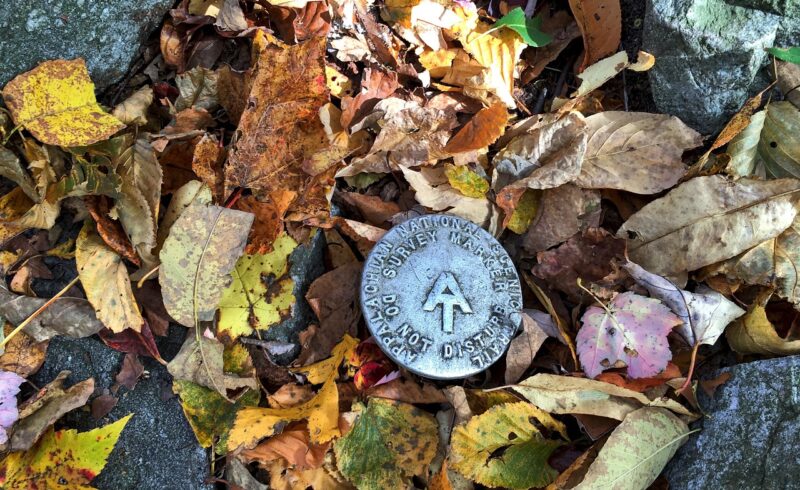
The Appalachian Trail is an over-2,190-mile footpath stretching from Georgia to Maine, through lush national forests and past waterfalls, over mountains and rough terrain. I didn’t know much about it until I spoke to a friend of mine, who hiked 275 miles of the AT in 22 days, to celebrate and contemplate his recent college graduation. From what I’d heard, the trail was a huge challenge; so, I spoke to him to find out why so many people have the AT on their bucket list, what it takes, and why it’s worth it.
Why Hike the Trail?
A frequently-referenced Old Dominion University study conducted in 2009 by Eddie Hill, Marnie Goldberg, and Barbara Friedt found that some of the most common reasons for hiking the Appalachian Trail were for fun and enjoyment and to foster relationships with others. Some of the results of the hike included improved health and exercise, environmental awareness, camaraderie, and self-reliance.
My friend’s motivations were related to personal growth– developing resilience, spiritual discipline, and a better understanding of the past and its meaning, among other things. He took advantage of the silent hiking time to accomplish these goals: “You have a lot of time to think on the trail” (although, he admitted, “a shocking number of my thoughts went to song lyrics.”) He says he has also implemented changes in his life post-trail that align with his goals.
Preparing to Hike
His pre-trail prep was basic: “A lot of it was gear acquisition. … Figuring out how to use all the gear” (e.g. testing out sleeping bags and packs) and “doing some mild research about bears so I know what to do if I ever encounter a bear.” For the first week, his uncle went with him and showed him the ropes, which helped him acclimate. He also learned quickly how it felt to carry 40 pounds on his back for roughly 13 miles each day, and how to pace himself.
“What I wish I had learned,” he said, “was how to do a bear hang.” A bear hang is a way to bear-proof your food by hanging it from a tree branch, out of the easy reach of curious paws. In many places along the trail there are bear-proof boxes or “bear cables,” but not everywhere. Fortunately, a kind stranger who went by the trail name “Captain Cupcake” was able to teach him how to do a bear hang before this became an issue.
Lessons on the Trail
As for difficulty, he had some stories of trial and error. ““I think one of the hardest moments was on a day I had to do approximately 16 miles, and it was almost all uphill, and I… didn’t have enough water on me… and that was difficult from a physical standpoint of ‘I need to get one more step, and now another step, and now another step,’ just to get to a place where I could get water, cause the nearest spring that I could filter water from was at the campsite.” After that, he always brought enough water, and he stopped as often as possible to refill.
The other major difficulty was rain. After sludging his way through mud and getting all of his clothes soaked by a downpour, he learned to use Ziploc bags to keep things dry– but he eventually gave up on raingear and embraced it instead. “At some point I decided that it’s not worth it to keep myself dry, because actually you can’t keep yourself dry. Rain clothing is not to keep you dry, it’s to keep you warm. … it was adding weight to my pack… I mean, by the time I knew rain was coming, I had time to put the pack cover on and that was about it.”
Day-to-day trail life was simple, and surprisingly, not too tiring. In the evenings he spent about two hours on a regular routine: “fix dinner, eat dinner, clean stuff, pitch tent, set up sleeping bag and sleeping pad, and put everything in a bear containment unit or in a bear hang or a bear cable.” He would go to bed with the sun at 7:30, and wake up at 6, well-rested and ready to go.
Things to See
Some of the highlights of the trail included trail-towns, locations either on or near the trail, including Gatlinburg. During his time in the Great Smoky Mountains, he saw five bears, and heard a sixth, though none of them bothered him.
He also had a recommendation of a favorite spot. “The Great Smoky Mountains are an amazing national park, and even if you don’t hike the Appalachian Trail, there’s an 8-mile segment between Clingman’s Dome, which is the highest point east of the Mississippi, and Newfound Gap, which is called the Enchanted Forest. And I kid you not, it’s like you’re walking through a fairy tale. It’s amazing.”
Support Along the Way
Some people, like my friend, regularly restock and take on or remove gear during regular visits with family members at designated stops. Others will mail gear or supplies to themselves at various places along the way. Some people even have someone pick them up to go home and sleep in between days of hiking. It is advised to take advantage of your support system. Cell service is not to be taken for granted– it is patchy in valleys– but it is available in most places, especially most campsites. Be sure to stay in contact with loved ones as you tackle the trail.
The Appalachian Trail is a frequent bucket-list activity. Many people on the trail are in the middle of a major life change — a diagnosis, a divorce, graduation, retirement. It’s a grand undertaking; the difficult hike, coupled with beautiful scenery, can build relationships among traveling companions and can be a transformative personal experience even if you go alone. Completing such a grand undertaking can also instill a huge sense of accomplishment and satisfaction. Even if it’s not within your capability to hike such a large section of the trail, it can be rewarding to check it out, or at least to use it as a guide to beautiful views and stops in the Appalachian Mountains.
Want to learn more about the Appalachian Trail? You can find more resources on the National Parks website HERE.










